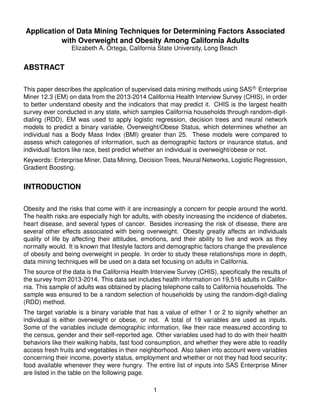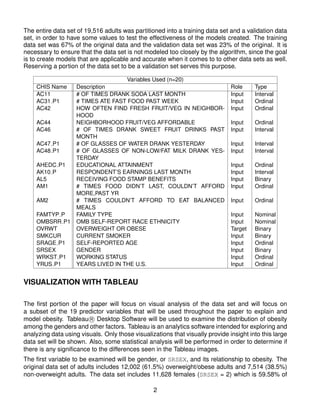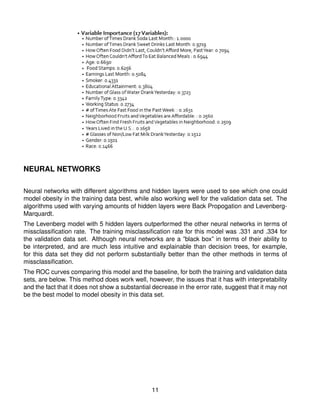This summary analyzes a document describing a study that used data mining techniques to analyze factors associated with overweight and obesity among California adults. The study used logistic regression, decision trees, and neural networks on data from the 2013-2014 California Health Interview Survey. Decision trees were able to identify important predictors of overweight/obesity such as race, age, gender, and fast food consumption. Gradient boosting decision trees had misclassification rates around 0.32-0.33. Using cluster analysis to segment the data first before decision trees further reduced misclassification rates. Race was the most important predictor in all decision tree models.












